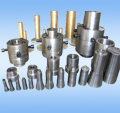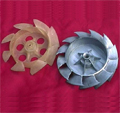

| Address: | PDS Enterprise Inc. 1650 West Artesia Blvd, Suite 278 Gardena, CA90248 |
| Phone: | 1-843-408-0142 |
| Email: | pdsenterprise@gmail.com sales@coolprototyping.com |


Home>Glossary
269. Injection mold
One of the most common methods of shaping plastic resins is a process called injection molding.
Injection molding is the process of forcing melted plastic in to plastic molds cavity. Once the plastic has cooled, the part can be ejected. It is useful when the parts are too complex or cost prohibitive to machine. With this process, many parts can be made at the same time, out of the same mold.
The general injection molding process almost includes some parts, that s Molding behavior of thermoplastics; molding functions - plastication & injection, forming & solidification; machine & mold operations, machine sequence; process sequence & variables - plastication, injection, packing & holding, cooling.
Injection molding is accomplished by large machines called injection molding machines.
Resin is fed to the machine through the hopper. Colorants are usually fed to the machine directly after the hopper. The resins enter the injection barrel by gravity though the feed throat. Upon entrance into the barrel, the resin is heated to the appropriate melting temperature.
The resin is injected into the mold by a reciprocating screw or a ram injector. The reciprocating screw apparatus is shown above. The reciprocating screw offers the advantage of being able to inject a smaller percentage of the total shot (amount of melted resin in the barrel). The ram injector must typically inject at least 20% of the total shot while a screw injector can inject as little as 5% of the total shot. Essentially, the screw injector is better suited for producing smaller parts.
The mold is the part of the machine that receives the plastic and shapes it appropriately. The mold is cooled constantly to a temperature that allows the resin to solidify and be cool to the touch. The mold plates are held together by hydraulic or mechanical force. The clamping force is defined as the injection pressure multiplied by the total cavity projected area. Typically molds are overdesigned depending on the resin to be used. Each resin has a calculated shrinkage value associated with in.
here are Some Typical Complications.
Burned or Scorched Parts: Melt temperature may be too high. Polymer may be becoming trapped and degrading in the injection nozzle. Cycle time may be too long allowing the resin to overheat.
Warpage of Parts: Uneven surface temperature of the molds. Non-uniform wall thickness of mold design.
Surface Imperfections: Melt temperature may be too high causing resin decomposition and gas evolution (bubbles). Excessive moisture in the resin. Low pressure causing incomplete filling of mold.
Incomplete Cavity Filling: Injection stroke may be too small for mold (ie. not enough resin is being injected). Injection speed may be too slow causing freezing before mold is filled.
All of this just are the basics of the injection molding. And for the injection mold, we have to focus on the process to make the high quality products.
Here are some samples we have done before, please kindly take a look:
 We are constantly looking for new products in order to grow our business and Invention Home has enabled us to streamline that process much more quickly.
We are constantly looking for new products in order to grow our business and Invention Home has enabled us to streamline that process much more quickly. Marsha Dunmyre
CA, U.S.A
BROWSE MORE
Cool Prototyping provides "one-stop" product design service: rapid prototyping, plastic molds, custom molds, production tooling and plastic molding.
Cool Prototyping Copyright 2008-2009 © All Rights Reserved. Rapid Prototyping
Cool Prototyping Copyright 2008-2009 © All Rights Reserved. Rapid Prototyping






